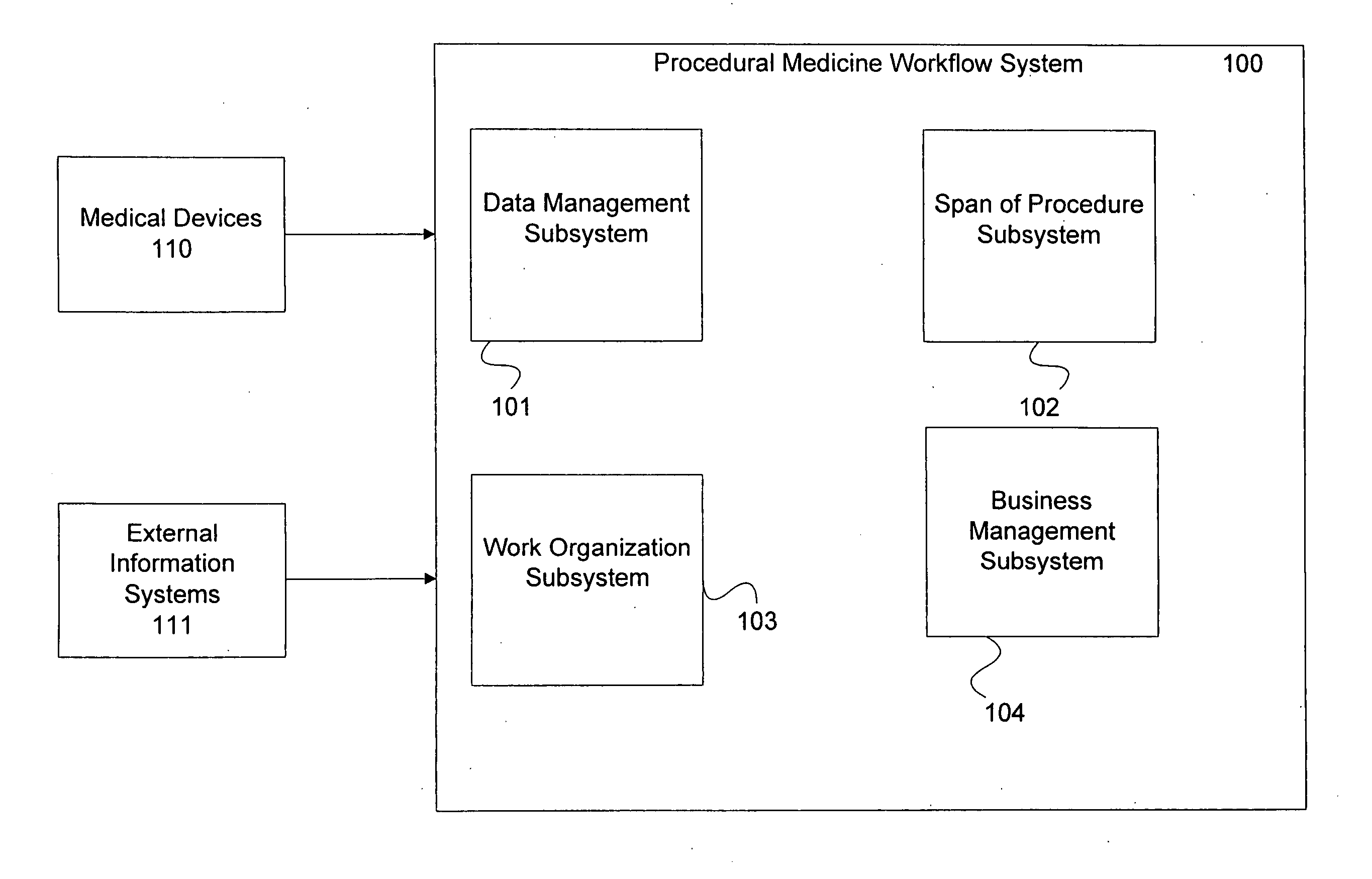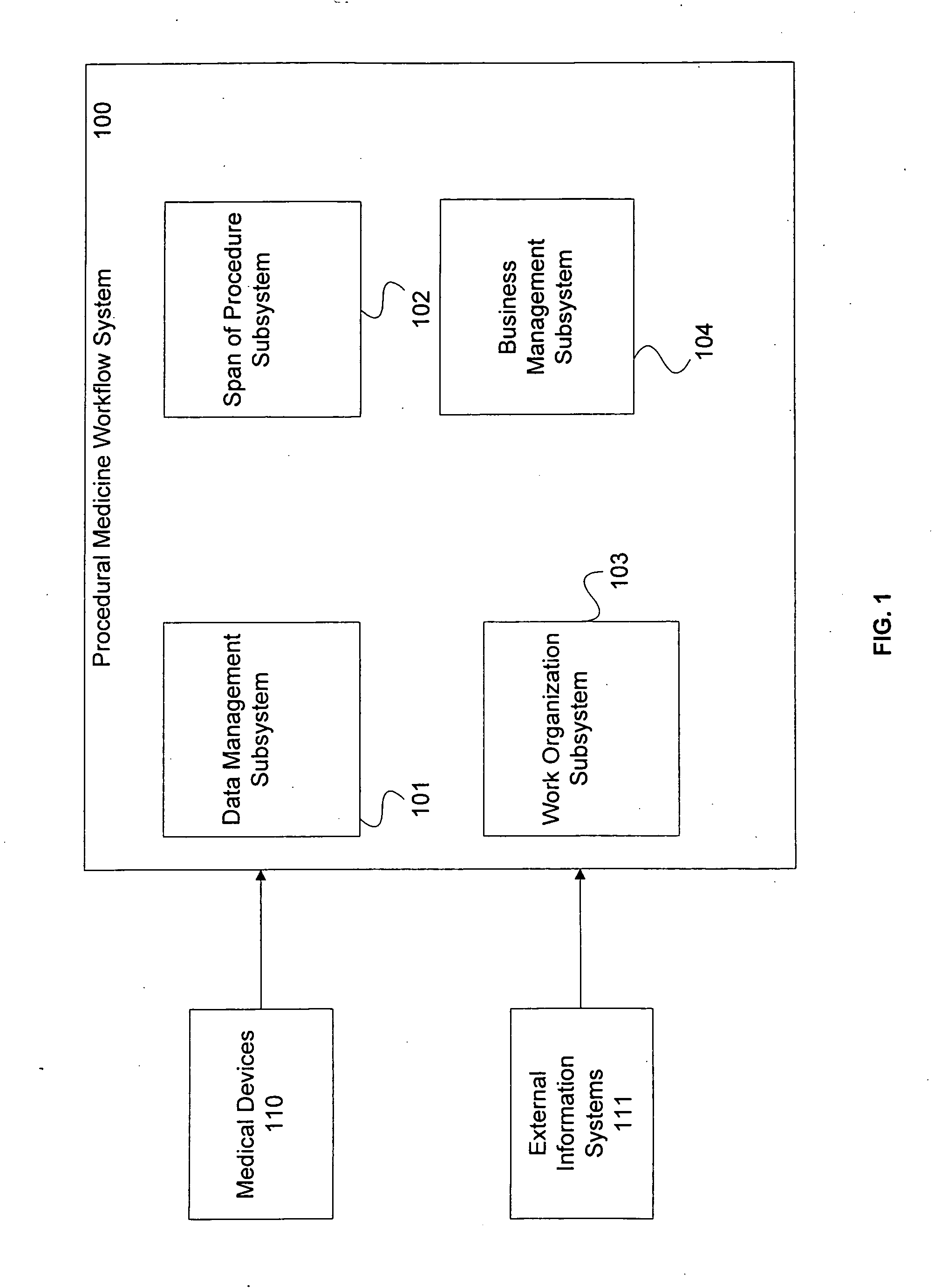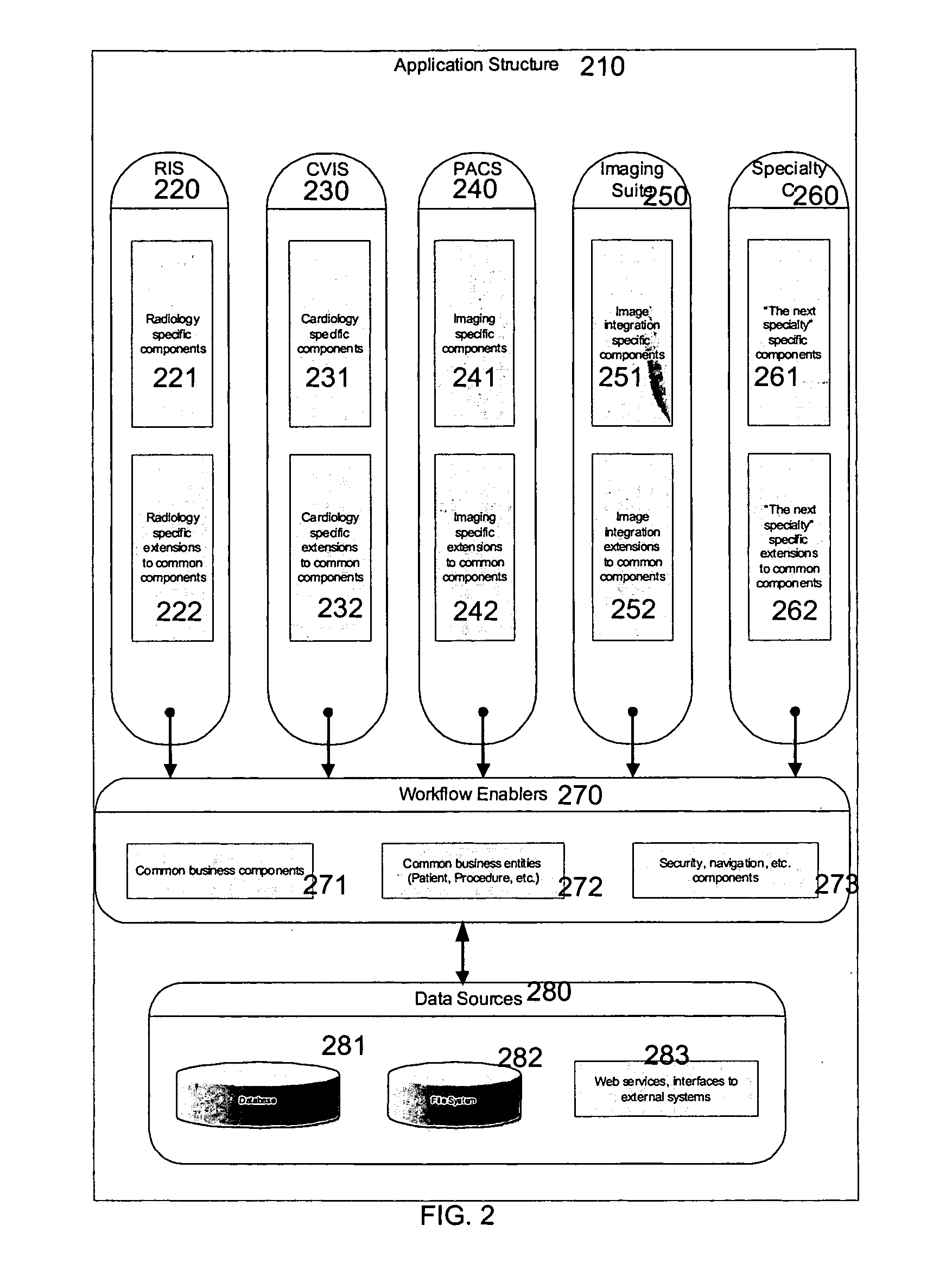Procedural medicine workflow management
a workflow management and procedure technology, applied in the field of health information management, can solve the problems of introducing errors into the image management system of the center, affecting and reducing the efficiency of patient-centric workflow systems, etc., to achieve the effect of facilitating the re-use of such components
- Summary
- Abstract
- Description
- Claims
- Application Information
AI Technical Summary
Benefits of technology
Problems solved by technology
Method used
Image
Examples
Embodiment Construction
[0059] While the present invention will be described in connection with preferred embodiments thereof, it will be understood that it is not intended to limit the invention to those embodiments. On the contrary, it is intended to cover all alternatives, modifications, and equivalents as may be included within the spirit and scope of the invention as defined by the appended claims.
[0060]FIG. 1 is a high-level block diagram illustrating a procedural medicine workflow system 100 according to one embodiment of the present invention. System 100 is implemented as a web-based software system providing a single mechanism for monitoring and improving clinical outcomes and business efficiencies of hospital service lines. The discussion that follows focuses on radiology, but those skilled in the art will appreciate that similar approaches are equally applicable to other procedural medicine practice areas.
[0061] In system 100, workflow is addressed from a “procedure-centric” point of view, so ...
PUM
 Login to View More
Login to View More Abstract
Description
Claims
Application Information
 Login to View More
Login to View More - R&D
- Intellectual Property
- Life Sciences
- Materials
- Tech Scout
- Unparalleled Data Quality
- Higher Quality Content
- 60% Fewer Hallucinations
Browse by: Latest US Patents, China's latest patents, Technical Efficacy Thesaurus, Application Domain, Technology Topic, Popular Technical Reports.
© 2025 PatSnap. All rights reserved.Legal|Privacy policy|Modern Slavery Act Transparency Statement|Sitemap|About US| Contact US: help@patsnap.com



